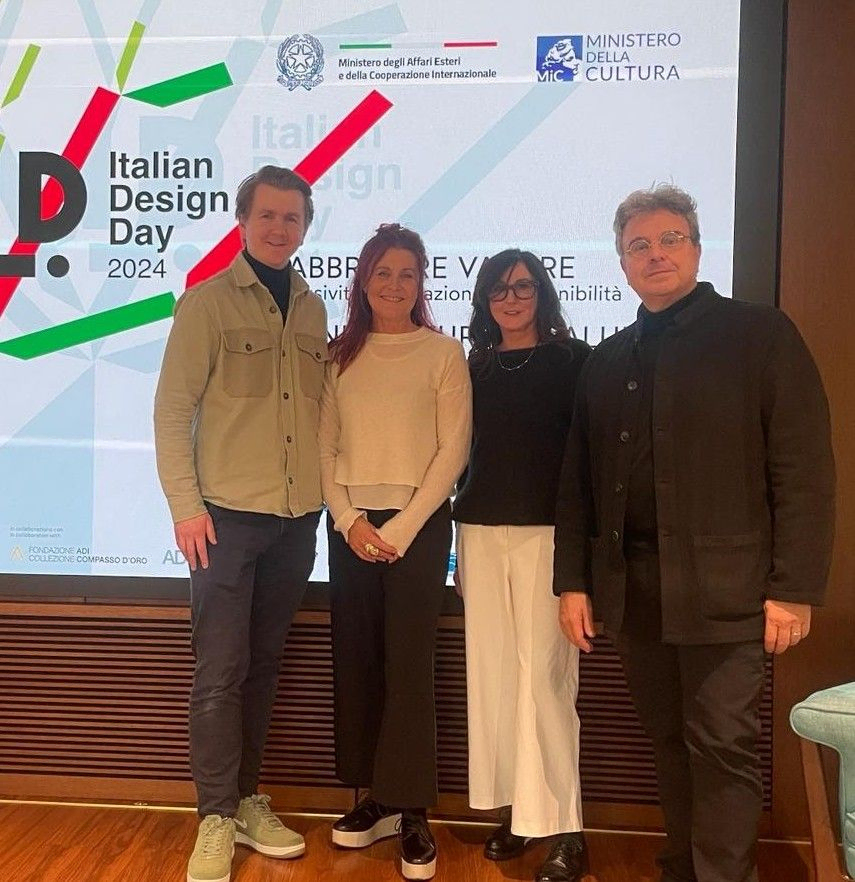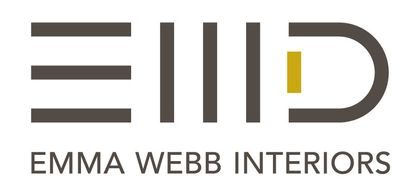
12/03/2024 by Emma Webb Interior Designer
Speaking about Biophilic Design and Neuro Aesthetics at the launch of Italian Design Week 2024 in Dublin
Speaking about Biophilic Design and Neuro Aesthetics at the launch of Italian Design Week 2024 in Dublin. Here is what I said...
Around 10 years ago I was working on a residential project with a lovely client who was suffering from a disease that meant every day was a struggle in terms of pain and fatigue . I realised at that time that what was accepted as good interior design fell short in providing supportive spaces for people to thrive. And so I made it my mission to focus my designs around wellness and deliver spaces that were not only inclusive, adaptive and sustainable but also designed to support the health, well being of my clients.
There is a famous Swedish study from the 80s where people were subliminally exposed to images of snakes, spiders, and frayed electric wires and guns. Almost all of the participants had adverse reactions to the snakes and spider images yet remained largely indifferent to the handgun and electric wires.
Nature is ingrained in us. We spent the first 97% of our evolution living directly in nature. It is only recently that we have moved indoors and cut ourselves off from the natural systems that we evolved from, and so it can be no surprise that the primitive parts of our brain crave a reconnection with nature. This connection is called Biophilia – which describes our innate love of life and the living world.
Over the last 30 years studies have yielded convincing evidence that link interactions with nature to
· increased sense of well being, productivity, and creativity; and reduced stress levels
· improved academic test results in schools and decreased absenteeism
· increased healing rates in hospitals, decreased pain medication being administered
Nueroscience explains this biological phenomenon as Neurological nourishment – a craving for certain types of information related to the natural world – crucial for cognitive restoration.
This research has led to the emergence of Biophilic Design which is an evidence based approach that fuses design with natural elements because Nature has a powerful role in making us feel good.
A study carried out in 2018 in which people spent 5 mins seated in a window less classroom and 5 minutes seated in a space with plants, biomorphic ( natural ) patterns and a view of the river outside found significantly different outcomes. The biophilic setting led to lower blood pressure, lower galvanic skin conductance ( this measures changes in the skin in response to stress) and a 14% improvement in short term memory performance.
Biophilic Design is so effective that all the tech companies – google, apple etc have in house biophilic advisors on their design teams. I have been using biophilic design principles to inform my work for a number of years now.
More recently Neuro Aesthetics has also influenced my approach to design , this is a relatively new science which focuses on the impact the arts ( art, architecture, interior design, music, poetry) have on our neurological processes.
For example , we are predisposed to react positively to beauty – the reward and pleasure centres in our brain are triggered and as a result our cortisol levels are reduced. Cortisol is our stress hormone.
In addition, research has also shown that people sleep longer in a blue room and that wine tastes sweeter in a red room. A certain shade of pink ( baker miller) can lower aggression – useful in prisons.
By understanding and implementing the principles identified by research in both the biophilic and neuro Aesthetics arenas, I believe that designers, like me, can deliver supportive environments for people to thrive in.
Whilst most of the research in these areas have been carried out in work, care and educational spaces, it is the home that is most likely to have the biggest impact on our health and well being as we spend over half our lives there.…. Based upon an average lifespan of around 82 years we spend 74 years indoors. We spend 2/3 of this in a home- that’s 49 years…24 years in our bedrooms.. Let that sink in!!
Research has shown that a when family eats together that family bonds become stronger, kids are better adjusted, they eat more nutritional meals, and are less likely to abuse alcohol and drugs.
Further research indicates that stress can become more manageable when there is support of family and friends, and that the quantity and quality of social connections correlate with a reported well being and also play a major role in maintaining our cognitive health.
An outstanding 77% of people with highly cluttered homes are more likely to be overweight – claims a 2014 study on hoarding and eating. A UCLA study in 2010 reported that women who had issues with clutter had the same cortisol pattern usually associated with post traumatic stress disorder. And another study in 2013 showed that people were more likely to eat a chocolate bar than an apple in a disorderly room.
Clutter hugely impacts on decision fatigue – the brain is making micro decisions all day and just gets to a point that’s its utterly fatigued. So in order to deliver restorative home design we have to deliver efficient storage solutions.
The integration of nature into a biophilic design scheme is key to its effectiveness – this includes the use of timber ( shown to reduce stress levels when touched and viewed) natural patterns and fractals ( shown improve cognitive function and enhanced problem solving) and organic shapes ( rounded shaped furniture encourages more brain activity compared to a room with boxy furniture) as well as including natural colours, materials smells ( essential oils) and sounds.
So when I am designing a home I ensure that we don’t design around the TV but focus on the views, that we follow the movement of the sun to harness natural sunlight, that we provide opportunities for social connection - corridors, window seats, a kitchen Island and that we have quiet spaces and noisy spaces, tonnes of storage to eliminate clutter and that we use natural materials throughout or we mimic them.
Finally I would like to talk about inclusive design - whilst it primarily focuses on designing for neurodiverse and physical needs, inclusive design benefits everyone - it is the common denominator of great design. There is a saying ” Good design enables, bad design disables” . this is hugely important statement - because we spend so much our lives within the designed environment – indoors and out.
My vision of design moving forward is one based upon science , that understands and embraces the principles of Nueroaesthetics, biophilic and universal design and applies this knowledge in all areas of the built environment so that all people can feel supported, comfortable, acknowledged and catered for. I believe there are also enormous opportunities for innovation in this space, especially in how tech may interact with the built environment to personalise the experience.
Let me give you a example of this. Google had an installation at Milan design week in 2019 called a space for being. This involved the creation of 3 very different rooms based upon neuro aesthetic principles. People were asked to wear a biofeedback band created by google and spend time in each of the rooms and select the room that they felt most comfortable in. The rooms were – ESSENTIAL natural and textured and earthy – colours, smells and sounds,; VITAL citrus colours , strong shapes, vibrant music and smells; TRANSFORMATIVE elegant with natural materials and plants . What was fascinating about this study that the google band measured people's reaction to the space and identified which room they felt most at ease in – when asked which room that was - over 50% of the respondents were wrong!
So with the exception of biophilic design there really isn’t a one size fits all approach in designing spaces – people's responses to their environment can be subliminally influenced by their own experiences, belief systems and values.
In summary, there are 3 key points that I would like you to take away from today’s talk
1. The way we design the built environment has a huge impact on health and well being
2. As designers and makers we should be able to educate and implement strategies that deliver spaces that allow people to thrive.
3. ” Good design enables, bad design disables” every project should value the user and their abilities no matter how small.
